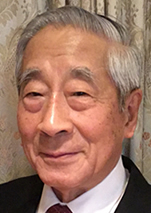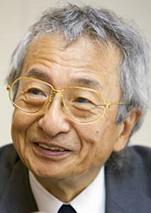2019 Recipients of C&C Prize
Group A

Dr. Yasuhiko Yasuda Professor Emeritus, The University of Tokyo |

Prof. Mitsutoshi Hatori Professor Emeritus, The University of Tokyo |
Citation
For leadership in pioneering research and development in the field of image processing that forms the foundations of broadcasting and information & communication engineering
Achievements
As the popularity of digital broadcasting has risen, the internet and social networking are pervasive in our social lives. With the practical realization of high-definition TV broadcasting such as 8K following the rollout of 4K, the launch of 5G high-speed wireless communication is expected to further drive social transformation and development. Efficient and user-friendly image coding technology has long played an integral role in the realization of this technology.
Since the 1960s, Dr. Yasuhiko Yasuda’s research and proposals on topics such as delta sigma modulation, G2/G3 facsimile encoding, and hierarchical image encoding have led to a long list of pioneering achievements that have helped develop information and communication engineering as we know it today.
The delta sigma modulation algorithm eliminates the shortcomings of conventional delta modulation and is a groundbreaking A/D conversion algorithm that offers excellent performance and mounting flexibility. The technology is an essential component in the oversampling algorithm and high-precision A/D conversion algorithm employed in processing audio signals, and researchers around the world are still actively involved in the research and development of delta sigma modulation more than half a century since its discovery. In the area of facsimile encoding, Dr. Yasuda proposed the analog bandwidth compression algorithm and went on to lead research and development in image compression, halftone screen technology, and other elements from the early stages of digital facsimile development.
Furthermore, in 1980, he proposed a hierarchical image coding system as a method for encoding still images. In this method, the algorithm transforms image signals into a hierarchically ordered set of data before transmitting the data, making it possible to instantly provide an overview of the image to recipients. Besides enabling optimal transmission of image data to devices in various environments and resolutions, hierarchical image coding is positioned as an international standard for still image coding similar to ISO, IEC, and ITU-T and provides many other remarkable benefits. In 2017, the Institute of Electronics, Information and Communication Engineers selected Dr. Yasuda’s delta sigma modulation algorithm and hierarchical image coding as IEICE milestones of significant impact on society, the industry, or the development of science and technology. He also received a special mention for his accomplishments in digital sigma modulation and hierarchical image coding. Furthermore, in 2012, the standardization of the G3 facsimile jointly applied by NTT and KDDI was selected as an IEEE milestone.
In addition to technological contributions such as those mentioned above, Dr. Yasuda has dedicated long years of service performing as a chairman of conferences and on various councils, and he has spearheaded the formulation of standards in digital broadcast systems. He has built a legacy of innovation in information and communication engineering from its development to practical application.
Under the guidance of the late Yasuo Taki, professor at the University of Tokyo, Prof. Mitsutoshi Hatori predicted the critical role high-efficiency coding was going to play in the future of TV signals, video phones, video conferencing, and other video images, and he conducted research from the early stages of development. He produced a number of research results and accomplishments that form the basis of today’s high-efficiency video coding technology. Besides basic research on video signal processing, he was a leader in organizations responsible for facilitating practical use and standardization.
One of Prof. Hatori’s groundbreaking research results is the technology he advocated in “Interframe coding that follows the motion,” which he coauthored with Prof. Taki and others in 1974, and the foundation that he established with respect to its practical application. The blockmatching algorithm technology—classified within the category of interframe coding—is a temporal redundancy image compression technique that is an estimation method that divides images into blocks of pixels and predicts the interframes using the correlation between each moving block; it is regarded as a leading innovation in interframe coding. This research has been subsequently developed into the Moving Compensation Coding that is employed in the MUSE transmission algorithm and MPEG coding algorithm for HDTV, and it has greatly driven the field forward. Furthermore, the professor innovated the field of video signal processing by researching the medical application of image processing, ghost cancelers, multipath distortion cancelers, other channel interference cancelers, and other signal processing research projects.
In addition to the technological contributions mentioned above, Prof. Hatori has contributed to the social proliferation of fields associated with communications and broadcast engineering. The professor has played a significant role in the practical application and development of the field by gaining the required consent of telecommunications carriers, broadcasters, broadcasting equipment manufacturers, ministries, government offices, etc. Besides developing talent at universities, he has long served as chairman of related conferences, as head of the Telecommunication Technology Committee, and as a member or officer of various councils, making remarkable contributions to building communities and providing leadership in the field of communications and broadcast engineering.
Given the enormous impact that they have had on the world through their visionary research in, and their development and promotion of, the image processing field and its social implementation, we believe that Dr. Yasuda and Prof. Hatori would be excellent recipients of the C&C Prize.
